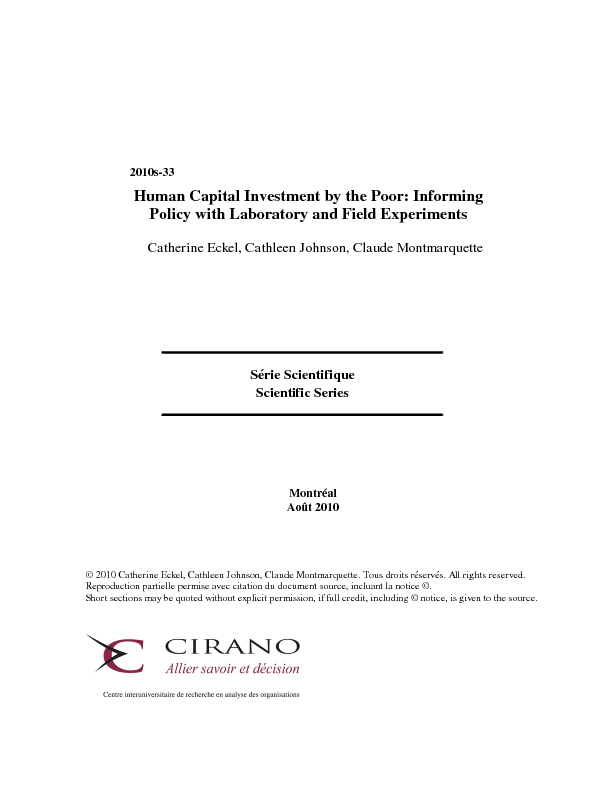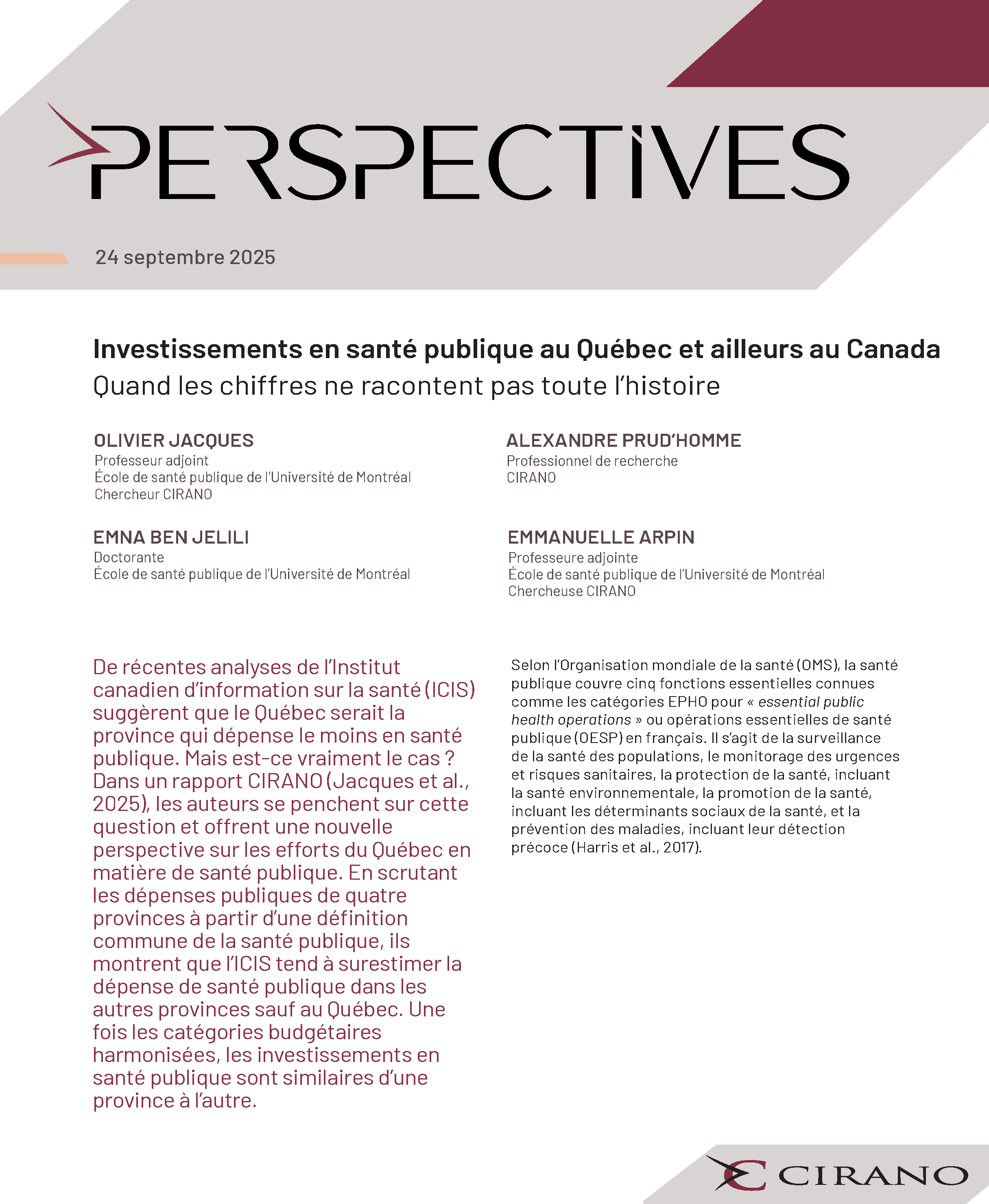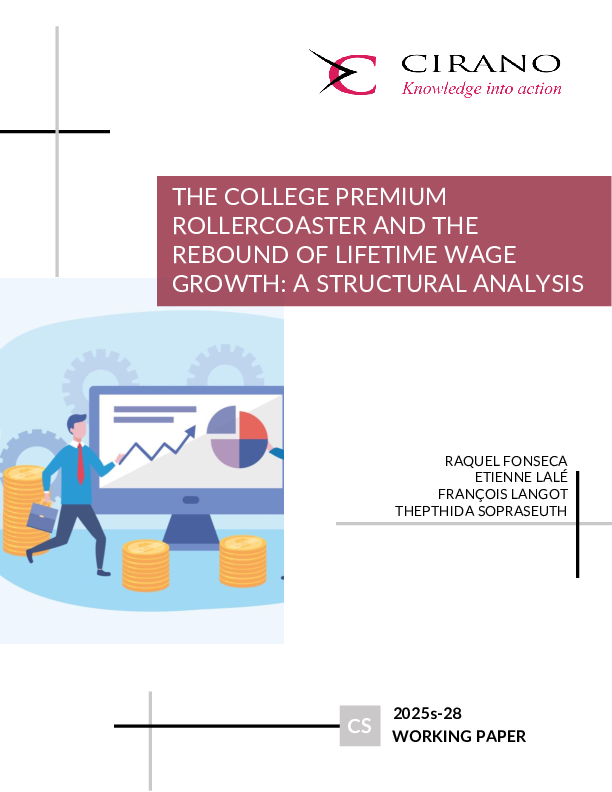Human Capital Investment by the Poor: Informing Policy with Laboratory and Field Experiments
The purpose of the study is to collect information that can be used to design a policy to induce the poor to invest in human capital. We use laboratory experimental methodology to measure the preferences and choices of the target population of a proposed government policy. We recruited 256 subjects in Montreal, Canada; 72 percent had income below 120 percent of the Canadian poverty level. The combination of survey measures and actual decisions allows us to better understand individual heterogeneity in responses to different subsidy levels. Two behavioral characteristics, patience and attitude towards risk, are key to understanding the determinants of educational investment for the low-income individuals in this experiment. The decision to save for a family member's education is somewhat different from that of investing in one's own education. Again, patient participants were more likely to save for a family member's education, but in contrast to investing in one's own education, a subject's attitude towards risk played no role.
[ - ]




